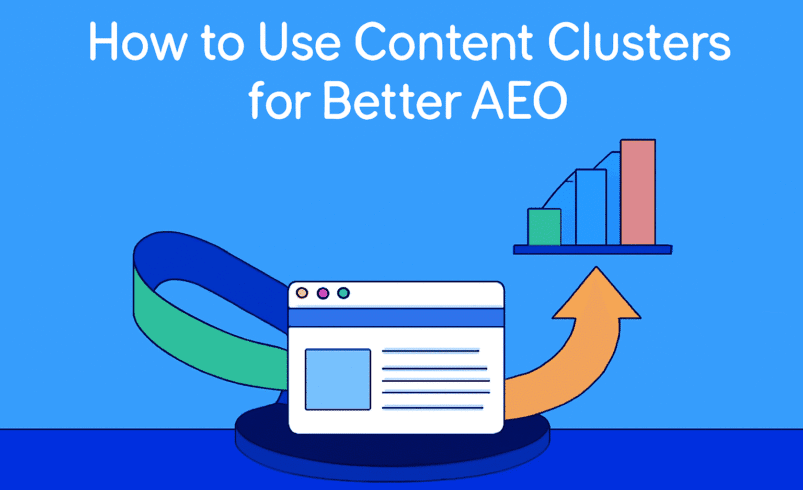How to Use Content Clusters for Better AEO
- May 12, 2025
- 0
SEO is evolving in today’s digital landscape, and traditional optimization techniques are no longer enough to stay ahead. One of the most effective strategies gaining traction for improving
SEO is evolving in today’s digital landscape, and traditional optimization techniques are no longer enough to stay ahead. One of the most effective strategies gaining traction for improving

SEO is evolving in today’s digital landscape, and traditional optimization techniques are no longer enough to stay ahead. One of the most effective strategies gaining traction for improving SEO is Content Clusters, particularly in the context of Answer Engine Optimization (AEO). AEO focuses on structuring content to appear in direct answer boxes or snippets, enhancing your visibility in search results. Content clusters are integral in optimizing these answer boxes by creating a more comprehensive, user-friendly content structure.
In this blog post, we will explore how content clusters work and how you can use them to enhance your AEO efforts for improved search rankings.
Content clusters refer to how you organize and link content on your website around a core pillar topic. This method involves grouping related content into silos with a central “pillar page” that provides an overview of a specific topic. The pillar page serves as the main entry point to the cluster, while individual cluster pages dive deeper into subtopics.
For example, a website focusing on “Digital Marketing” might have a pillar page that introduces the broad concept of digital marketing. Beneath that, content clusters could cover topics such as SEO, PPC, Social Media Marketing, etc., each with detailed, niche-specific content.
AEO is about making your content easy for search engines like Google to identify and serve as an answer to specific user queries. By using content clusters, you help search engines understand the relationship between various pages and the central pillar topic. Here’s how content clusters contribute to AEO:
To build an effective content cluster strategy, follow these steps:
The first step is identifying the core topics for your website. These should be broad topics relevant to your niche or industry. For instance, if you run a health and wellness blog, your pillar topics could be “Mental Health” or “Physical Fitness.”
Once you’ve identified pillar topics, research relevant subtopics that fall under these broader topics. Subtopics can be long-tail keywords or questions that users frequently ask. Tools like Google Keyword Planner, Answer The Public, or SEMrush can help identify these.
For example:
Create content around each subtopic that is detailed, informative, and optimized for AEO. Aim to answer specific questions directly and clearly, as Google rewards content that provides clear, concise answers.
Make sure your cluster content is optimized for featured snippets. Use bullet points, numbered lists, and direct answers to common questions. Also, focus on schema markup and structured data to enhance your chances of being selected for a featured snippet.
Ensure that all cluster content is linked back to your pillar page. Also, provide a link to relevant cluster pages from the pillar page. This internal linking structure helps Google understand the relationship between the pillar page and cluster content, strengthening your overall authority on the topic.
Content clusters are not set-and-forget. Regularly update your cluster pages with fresh content and new insights. This will keep your content relevant and maintain your rankings in search results.
Content clusters are a powerful strategy for improving AEO and securing prominent positions in search results. By building comprehensive content around pillar topics, you improve your chances of ranking for key queries and create a better user experience.
Start by identifying your core topics, researching subtopics, and building content clusters that target specific user queries. Over time, you’ll see the benefits of increased traffic, improved rankings, and better overall SEO performance.